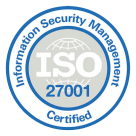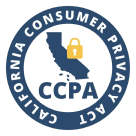What is Sales Process Automation: A Complete Guide for 2025

Most sales teams lose deals before a pitch ever happens — buried under missed follow-ups, scattered data, and slow response times.
That’s why investment in intelligent process automation is surging. The market is projected to reach over $25.9 billion by 2027, as companies look to streamline sales workflows and reduce manual drag.
Automation isn’t about replacing people. It’s about removing the friction that keeps sales reps from selling — the admin work, the endless data entry, the hours lost chasing cold leads.
The companies winning today aren’t working harder — they’re working cleaner.
And it starts with automating the right parts of the sales process before they slow you down.
Key Takeaways
- Automation isn’t just about scaling sales. It’s about creating a faster, smarter process that wins more business with less friction.
- Sales process automation helps eliminate manual tasks like lead scoring, follow-ups, and CRM updates, freeing reps to focus on closing deals.
- Automation boosts sales team efficiency, speeds up pipeline movement, and improves lead conversion rates through smarter workflows.
- Choosing the right sales automation platform depends on how well it fits your real-world workflows, not just feature checklists.
- Successful automation still needs human oversight — ongoing optimization, data hygiene, and rep training are critical.
What is Sales Process Automation?
Sales process automation is the use of software and AI tools to handle the repetitive, manual tasks that slow down sales teams — like lead scoring, follow-up emails, outbound calls, and CRM updates.
By automating these steps, businesses can focus more on building relationships and closing deals, instead of managing busywork.
Common examples of sales automation include setting up workflows for qualifying leads, automatically logging sales activities into your CRM and sales automation, sending reminders for follow-up calls, and using AI-powered dialers to handle outbound outreach.
Automation doesn’t replace the human side of sales — it strengthens it.
When tedious tasks happen in the background, reps have more time to engage, personalize, and sell smarter. A similar approach is now being used in finance through AI accounting automation, helping teams save time on routine tasks.
Still wasting hours on manual tasks? Automation fixes that — fast.
Why Is Sales Automation Important for Modern Sales Teams?
Imagine you’re managing a sales team juggling dozens of leads a day — logging activities manually, sending follow-ups by hand, updating pipelines at night.
It’s not just exhausting. It’s unsustainable.
Here’s what’s changed behind the scenes.
Modern sales teams are moving to data-driven workflows powered by automation.
Tasks like lead scoring, CRM updates, and follow-up scheduling now happen automatically — no extra clicks, no missed steps.
The payoff is real.
Companies that adopt sales automation can improve efficiency by 10–15% and boost sales by up to 10%
Automation cuts human error, speeds up handoffs, and helps businesses scale without adding more headcount.
In today’s market, success isn’t about making more calls — it’s about making smarter ones.
And the teams embracing automation are pulling ahead.
Key Benefits of Sales Automation
Work Faster, Sell More
Manual admin work like logging calls, updating CRMs, and scheduling follow-ups eats into valuable selling time.
Sales automation tools like CloudTalk’s Smart Dialer streamline repetitive tasks by automatically dialing numbers, logging calls, and moving leads through sequences without manual input. This means reps can spend less time clicking and more time actually talking to prospects — which shortens sales cycles and reduces burnout.
By removing busywork from the process, teams can handle more leads in less time — without burning out.
Never Miss a Follow-Up Again
Missing a follow-up is one of the fastest ways to lose a deal.
Sales automation systems ensure that every prospect gets timely, personalized touchpoints — automatically.
With sales workflow automation, you can trigger follow-up calls, emails, or texts based on customer actions, keeping your brand experience consistent without needing manual intervention.
Nurture the Right Leads at the Right Time
Not every lead is ready to buy right away — but automation helps you stay top of mind until they are.
Sales teams using automation in sales and marketing can track lead behavior, score prospects in real-time, and prioritize outreach based on buyer readiness.
Tools like CloudTalk integrate directly with CRM systems to update lead statuses automatically after every interaction.
Make Smarter Decisions With Better Data
Sales automation platforms provide clean, real-time data — no more chasing down spreadsheets or missing insights.
Using sales performance automation, managers can instantly spot pipeline bottlenecks, measure rep performance, and adjust strategies based on facts, not guesses.
CloudTalk’s reporting dashboard makes it easy to visualize calling KPIs and refine outreach efforts faster.
Cut Costs Without Cutting Performance
Automation doesn’t just speed up sales — it cuts down overhead.By automating manual workflows, businesses can reduce dependency on extra staffing and streamline their entire sales operation.
Solutions like CloudTalk provide outbound sales automation help you run high-volume campaigns efficiently without sacrificing quality or burning through resources.
Stop losing time (and deals) on manual sales tasks.
Real-World Applications: Where Sales Automation Shines
Lead Qualification and Scoring
You’re sitting on a hundred new leads after a webinar.
Without automation, your team is guessing who’s hot and who’s just window-shopping.
Sales automation tools can score leads based on activity, profile match, and intent signals — making it obvious who deserves a call today, and who needs a little more nurturing.
CloudTalk integrates with your CRM so that every call outcome instantly fine-tunes your lead scoring model without lifting a finger.
Outbound Calls and Follow-Up Sequences
Deals rarely close on the first call — and nearly half of reps stop chasing after one. That silence isn’t neutral. It’s an open door for someone else.
Workflows can trigger next calls, voicemails, or reminder emails automatically.
In CloudTalk, you can automate follow-up SMS or calls based on lead behavior — so when a prospect doesn’t respond, your next touchpoint still goes out on time.
Meeting Scheduling and Calendar Automation
Nobody wants to exchange 11 emails just to book a demo.
Automation solves it fast: once a lead reaches a trigger point (like submitting a form or hitting a scoring threshold), a meeting invite goes out instantly — synced with your rep’s calendar.
Less back and forth, more face time.
Sales Pipeline and CRM Updates
If your pipeline isn’t accurate, your forecast isn’t real. And your targets don’t stand a chance.
Automation updates your CRM every time a lead moves, calls complete, or deals are touched — no manual notes, no forgotten stages.
With CloudTalk’s real-time CRM syncing, you can trust that your deal progress actually matches reality, not memory.
Quote and Proposal Generation
When a lead’s ready, every second counts.
Automation can instantly generate proposals or contracts from templates when a deal hits “Negotiation” — without a rep scrambling through folders.
Here, CloudTalk acts upstream: by accurately logging call results and opportunity status, it feeds clean data into your proposal generation system.
Post-Sale Customer Handoff
Nothing frustrates a new customer faster than a silent handoff.
Sales automation can instantly trigger onboarding emails, assign account managers, and even kick off a welcome call.
Teams using CloudTalk’s AI voice agents can automate first-touch outreach, so every customer hears from you — fast, friendly, and without waiting.
Discover the Future of Conversations
Types of Sales Automation Software
CRM Automation Tools
A customer relationship management (CRM) system is more than a database — it’s the heart of your sales operation.
CRM automation tools handle lead assignments, trigger workflows based on pipeline stages, log activities automatically, and help reps stay organized without chasing paperwork.
With the right CRM and sales automation, every call, meeting, and deal update feeds directly into your CRM — giving your team a single source of truth for every prospect.
Calling & VoIP Automation
Outbound calling still drives a huge share of B2B sales. But when reps have to manually dial numbers, leave voicemails, and log calls, it kills momentum fast.
Outbound calling automation platforms like CloudTalk streamline the whole process — automatically dialing leads, dropping voicemails, syncing call outcomes into the CRM, and even prioritizing call lists based on buyer behavior.
With features like the Smart Dialer and Power Dialer, CloudTalk helps sales teams move through high-volume campaigns without losing personalization.
Email Automation Platforms
Email isn’t dead — but manual email definitely is.
Sales automation platforms for email let you build personalized sequences that trigger based on buyer actions. Opened an email? Clicked a link? Requested a demo?
The next message goes out automatically, keeping the conversation alive without your rep having to babysit it.
Connected with your CRM and calling tools, email automation ties into the full sales journey, not just marketing blasts.
AI Voice Agents
AI voice agents are one of the newest weapons in the sales automation stack.
Instead of sending every call to a human, AI agents can answer FAQs, schedule meetings, route calls, and even qualify leads — all before a live rep ever picks up.
CloudTalk’s AI voice agents help businesses manage inbound call volume, improve customer experience, and keep reps focused on the highest-value conversations.
Proposal & Document Automation
When a buyer’s ready to close, slow paperwork can still lose the deal.
Proposal and document automation tools generate personalized quotes, contracts, and agreements based on CRM triggers — no Word docs, no manual copying.
When connected properly, your system can pull in client details, deal terms, and product info automatically, helping reps move from “interested” to “signed” at record speed.
Reporting and Analytics Tools
If you can’t see where your funnel leaks, you can’t fix it.
Sales reporting tools automate the collection and visualization of pipeline data — from lead generation metrics to close rates to call performance.
With CloudTalk’s real-time reporting dashboards, teams can monitor KPIs like call pickup rates, follow-up speed, and conversion trends — making it easier to optimize every step of the sales cycle.
Manual sales processes are bleeding time. Stop it in minutes.
Top Challenges of Implementing Sales Automation (And How to Overcome Them)
Tool Overload and Tech Stack Fatigue
It’s easy to get carried away.
One tool for calling, another for CRM updates, another for email sequences… until your team needs a spreadsheet just to track their software.
Solution: Focus on consolidation, not expansion.
Choose platforms that integrate natively with your existing workflows. Look for sales automation systems that combine calling, CRM syncing, and workflow automation in one stack — so reps spend less time toggling, more time selling.
Poor Data Hygiene
Bad data kills good automation.
If your CRM is filled with outdated contacts, wrong deal stages, or missing activity logs, automating your processes only makes the mess faster and bigger.
Solution: Clean before you automate.
Audit your CRM, fix broken fields, standardize naming conventions, and purge junk contacts.
Systems like CloudTalk help by automatically syncing clean call logs and updates into your CRM after every interaction — keeping data fresh without needing daily manual checks.
Lack of Buy-In from Reps
Even the best automation setup falls flat if your team doesn’t use it. Reps resist tools they don’t trust — or that feel like extra work.
Solution: Make reps part of the process.
Involve them early when choosing tools, building workflows, and setting rules.
Show how automation helps them hit quota faster — not just how it helps managers track performance.
When reps see the benefit, they use it. When they don’t, they bypass it.
Over-Automation That Feels Robotic
Yes, automation is powerful — but too much, and your customer experience tanks.
Nobody wants to feel like they’re talking to a machine.
Solution: Keep the human touch where it matters.
Automate tasks like call logging, follow-ups, and lead scoring — but let reps handle relationship moments, negotiations, and personalized outreach.
The best sales automation solutions support your team, not replace them.
Best Practices for Implementing Sales Automation Successfully
Audit and Map Your Current Sales Process
Before you automate anything, you need a clear view of what’s really happening inside your funnel — not what you assume is happening.
- Identify repetitive tasks that slow reps down.
- Map handoffs, friction points, and pipeline gaps.
- Fix broken steps first, then automate what’s working.
Define Automation Goals and KPIs
Without clear goals, automation risks turning into busywork.
- Decide what success looks like: faster lead response, higher conversion rates, fewer missed follow-ups.
- Set measurable KPIs tied to real outcomes — not just activity numbers.
- Align your automation flows to business goals, not vanity metrics.
Choose the Right Tools for Your Stack
Not every automation tool fits every sales team.
- Prioritize platforms that integrate with your CRM, calling tools, and marketing stack.
- Choose solutions that support your real workflows — not ones that force you to reinvent them.
- For teams that rely on outbound calls, CloudTalk’s Dialer can speed up outreach without sacrificing personalization.
Ensure Proper Training and Team Buy-In
No tool succeeds without human adoption.
- Train reps not just how to use automation — but why it makes them faster and more effective.
- Appoint automation “champions” inside the team to drive early wins and share tips.
- Turn your best reps into advocates, not skeptics.
Monitor, Optimize, and Scale Gradually
Even great automation needs tuning.
- Regularly review performance data and real-user feedback.
- Kill broken flows early instead of scaling bad habits.
- Expand automation slowly — one proven improvement at a time.
Best Sales Automation Tools to Power Your Sales Stack
Finding the right sales automation tool is about choosing platforms that match your real workflows, connect with your existing systems, and help your team move faster without losing the human touch.
Here’s a look at some of the best tools built to automate key parts of the sales process — from outreach and call handling to CRM syncing and pipeline tracking.
1. CloudTalk
CloudTalk is a business phone system designed to automate critical parts of the sales cycle — from first outreach to post-sale handoffs.
With features like Smart Dialers, CRM-connected call flows, and AI-driven lead routing, CloudTalk helps sales teams speed up prospecting, qualify leads more efficiently, and ensure every call is logged and actioned automatically.
Best for:
SMBs that need flexible outbound automation, real-time CRM syncing, and intelligent lead routing without scaling up headcount.
Key features:
- Smart Dialer and Power Dialer for high-volume outbound calling
- Call Tagging, Whisper, Barge, and Smart Flow automation
- CRM-connected caller profiles and automatic activity logging
- AI voice assistant with multilingual support
- Analytics for missed call recovery and sales performance tracking
Integrations:
- Salesforce
- HubSpot
- Pipedrive
- Zendesk
Pricing: CloudTalk offers 5 pricing plans.
- Lite (Americas only): 19
- Starter (excluding US & LATAM): 25
- Essential: 29
- Expert: 49
- Custom pricing available on request
- Free trial available
2. Dialpad
Dialpad supports sales automation by using built-in AI to handle basic call management, capture conversation insights, and sync call outcomes with your CRM.
It’s best suited for teams already using Dialpad’s full communication suite that want to automate simple lead interactions and follow-up tasks.
Best for:
Teams that want real-time call summaries, voice-driven workflow triggers, and Google Workspace integration.
Key features:
- AI call summaries and real-time transcription
- Automated voicemail menus and call routing
- CRM activity syncing after calls
Integrations:
- Google Workspace
- Salesforce
- Microsoft 365
Pricing: Dialpad in-depth pricing guide
- Standard: from $15/user/month
- Pro: from $25/user/month
- Enterprise: Custom pricing available
- Free trial available
3. RingCentral
RingCentral’s AI Receptionist automates basic call handling and qualification, helping sales teams route inbound leads faster and answer FAQs without waiting on a live rep.
For companies already using RingCentral’s UCaaS ecosystem, it’s a low-friction way to layer automation into the early stages of lead management.
Best for:
Companies looking to automate lead routing and basic qualification inside their RingCentral environment.
Key features:
- Natural language voice interaction for faster call routing
- Automated FAQ responses for early-stage lead filtering
- Unified call management via RingCentral Admin
Integrations:
- Microsoft Teams
- Salesforce
- Slack
Pricing: RingCentral in-depth pricing guide
- Core: from $20/user/month
- Advanced: from $25/user/month
- Ultra: from $35/user/month
- Free trial available
4. Aircall
Aircall offers lightweight sales automation through AI-driven call flows and CRM-linked workflows.
Its virtual agent can automate early lead qualification, answer repetitive queries, and push call outcomes directly into connected sales systems — speeding up your sales team’s response time.
Best for:
Sales and support teams that need quick automation for lead triage, CRM updates, and call routing.
Key features:
- AI voice agent with scripted call handling
- FAQ automation to reduce rep workload
- CRM-linked call activity and lead management
Integrations:
- Salesforce
- HubSpot
- Zoho CRM
- Intercom
Pricing: Aircall in-depth pricing guide
- Essentials: from $30/user/month
- Professional: from $50/user/month
- Custom: Available on request (includes global calling and API access)
- Free trial available
5. Nextiva
Nextiva’s AI-powered conversational IVR helps sales teams route inbound leads to the right rep faster, automate early-stage qualification, and reduce manual call handling.
Its strong integration flexibility makes it a good fit for teams building automated lead intake or appointment scheduling flows.
Best for:
Sales teams that want conversational call routing and easy handoffs across multiple departments.
Key features:
- Conversational IVR and voice-driven lead routing
- Menu customization based on buyer intent
- Supports multiple team workflows with easy scaling
Integrations:
- Zapier
- Salesforce (via API)
Pricing: Nextiva in-depth pricing guide
- Essential: from $18.95/user/month
- Professional: from $22.95/user/month
- Enterprise: from $32.95/user/month
- Free trial available
Try sales automation that actually works together — calling, CRM, and follow-ups in one place.
Turn Your Sales Process Into a Growth Engine
Every deal starts with a process — but not every process is built to win.
Sales automation isn’t about doing less. It’s about giving your team the space to do more of what actually matters: connecting with prospects, closing deals, and growing revenue faster than ever.
When you automate the right parts of your sales process, you don’t just move faster — you move smarter.
You catch leads before they go cold. You follow up when competitors stall. You scale success without scaling chaos.
Sales automation isn’t a shortcut. It’s your advantage. CloudTalk is your advantage.
Make it part of how you sell — before someone else does it better.
Automation won’t just speed you up — it’ll pull you ahead. See it live.
Source:
FAQs
What is the main purpose of sales automation?
Sales automation systems help teams streamline tasks, speed up pipelines, and close deals faster without adding manual workload.
How does sales automation work?
Sales automation platforms use workflows, triggers, and CRM integration to automate lead handling, follow-ups, and sales tasks.
How can sales automation increase sales productivity?
A sales automation solution cuts admin time, improves lead response speed, and helps reps focus on selling instead of manual work.
How to implement sales automation in your business?
Start by auditing your sales workflow, then apply CRM and sales automation tools to automate repetitive tasks and lead tracking.
What is B2B sales automation?
Examples of IVR include appointment booking, order tracking, bill payment, info lines, and automated customer support menus.
How to Automate Your Sales Calls?
Use a Smart Dialer, CRM syncing, and sales call automation platforms like CloudTalk to streamline outbound and follow-up calls.
























